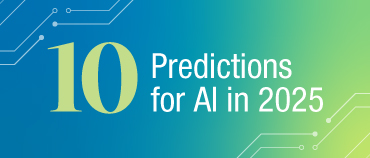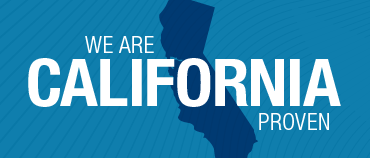As states receive funding for programs like CCBHC, data collection and analytics become more important than ever. Individual clinics are required to report metrics to states, while states supply proof of value to Health and Human Services and internal budgetary sources.
How do states go about aggregating information from all those disparate clinics into a cohesive picture to support decision making, strategic planning and measuring performance? I sat down for a webinar with Rebecca Farley David, Senior Advisor, Public Policy & Special Initiatives, National Council for Mental Wellbeing, who described data trends around the country. Andy Brown, Commissioner of Behavioral Health Services, Kansas Department for Aging and Disability Services, and Valerie Huhn, Director, Missouri Department of Mental Health, joined us to share their respective state strategies.
Read on for insight into nationwide data trends and initiatives, as well as stories from one state beginning their journey and one that has been successfully implemented for years.
A Nationwide Trend
We all know how value-based care led to an emphasis on reporting in our industry. And reporting, of course, requires data to support contract compliance and program accountability.
Rebecca Farley David sees this trend in all 50 states. And she also sees a desire for more and more data and technology.
“As we look at the changing landscape of behavioral health systems, two major initiatives that really rise to the top are the CCBHC model and the 988 suicide and crisis lifeline,” Farley David said. The CCBHC model is a new way of paying for services that are evidence-based, including outpatient mental health, substance use and crisis response. The program also includes extensive criteria related to care coordination, “expanding access to services and generally improving clinics ability to meet community needs.”
What’s important about CCBHC is that data isn’t needed simply for reimbursement. It’s tied to care coordination and improving care outcomes. Yes, clinics are using their extensive data reporting for process improvement, compliance, and system and provider networks. But all of this has led to a renewed interest in data for population health.
For instance, states have developed data warehouses, pulling from a multitude of providers across counties and service lines. Now, Farley David says they’re looking to aggregate data across various sites––or even states. Not only does this allow for better benchmarking, it allows for care coordination across state lines.
Theoretically, a platform could extend even beyond the healthcare sector. According to Farley David, the National Council on Mental Wellbeing is working toward a national data repository that state data could feed into, de-identified, and be aggregated for measuring program impact and delivering coordinated, whole-person care nationwide.
The Journey Begins
The Sunflower State has wasted no time embracing value-based care. They received grant funding that will support all 26 CMHCs that have transitioned, or will be transitioning, to the CCBHC model. This funding empowers their efforts to provide high-quality, community-based services for Kansans who need their support.
Kansas may be new to a value-based care model, but they’re already focused on data collection. Plans are underway for a state data warehouse, and the reasons aren’t limited to funding.
Kansas is a state with plenty of challenges. According to Commissioner Andy Brown, one in five residents deal with mental illness or addiction. The state struggled to track foster children from one placement to the next, which led to gaps in care and greater health risks. Brown is excited about investing new technology, including a single platform that connects all data sources in real time, integrating into user workflows. Near-real-time data will allow the state’s new 24/7 crisis centers to operate with fewer referral gaps.
When Commissioner Brown cites statistics describing mental health and substance use in Kansas, he’s sharing data––and the data shows a need to improve behavioral health outcomes. He hopes the service model at the state’s integrated care clinics can make a positive impact. “The individual is screened for behavioral health at the beginning of an appointment and a spectrum of services from primary to specialized care is provided under a single room or is contracted through close partnerships,” he said.
This kind of technology will make whole-person care easier to provide. Records can be exchanged from partner organizations, or even past care teams. Providers, who Brown says at one point spent 40% of their time hunting for records, can simply pull the needed documents from their workflow. And these documents will allow them to make more informed decisions about the individuals they care for. Numbers don’t lie. They will reveal a high risk of diseases like diabetes, hypertension and depression. And they will reveal the improvements that Kansas is already making.
Seeing It All Pay Off
Missouri was an early adopter of value-based care, starting in 2017. This means enough data has accumulated by now that they’re able to see financial trends. And they’re using those numbers to plan for the future.
Valerie Huhn, director of Missouri’s Department of Mental Health, recalls the early days. “We had 34 organizations, 11 different vendors. And of course, we were getting different data from all these different sources. Sometimes we could get it all into a single source, but then we would have to export it out into a number of spreadsheets to create reporting measures.”
Missouri was early to the game, implementing the kind of data centralization that Commissioner Brown is copying in Kansas. With all of their data integrated and reporting into a single source that could be accessed and shared, Missouri was able to prove that value-based care was working. They could also leverage reports to secure sustainable funding from the budget office and the legislature.
Huhn’s account of the data is impressive, including a 14% decrease in hospital costs with $15.4 million in savings. Without the ability to easily see and aggregate data, it’s a fiscal achievement that might have gone unrecognized.
“We’ve been able to reduce our hospital and ED utilization, but we’ve increased our access to patient care,” Huhn said. She also cited a $40 million general revenue pickup for the state. This means Missouri has the funds to grow, and to recruit (and retain) providers in a tough job market.
Huhn says that the Department of Mental Health has started a chain reaction with other agencies in Missouri. The Department of Human Services, Children’s Division, have begun partnering with Department of Mental Health clinical staff for assessments. The same single data source has been able to pull metrics for Children’s Division, which gives them access to the same level of comprehensive, centralized reporting. With this kind of peer service, Missouri is on its way to becoming a data-driven state.
Summing It All Up
Data is clearly an indispensable part of behavioral health care, and it’s going to remain that way for a long time to come. There are so many benefits to aggregating, sharing and reporting data––including cost savings and better care for at-risk populations. It’s hard to believe that data can accomplish so much, but the states like Kansas and Missouri stand by their experience––and by the numbers.









